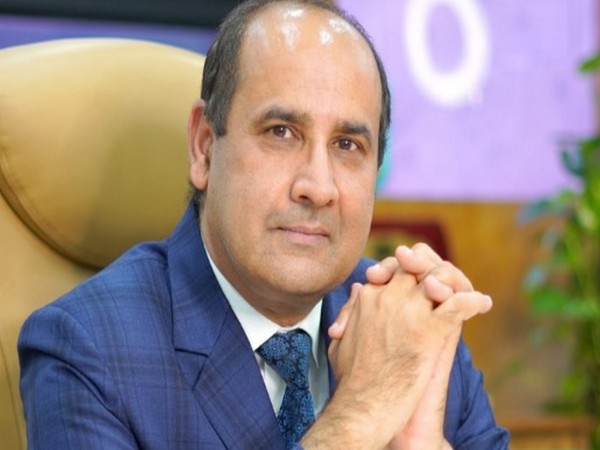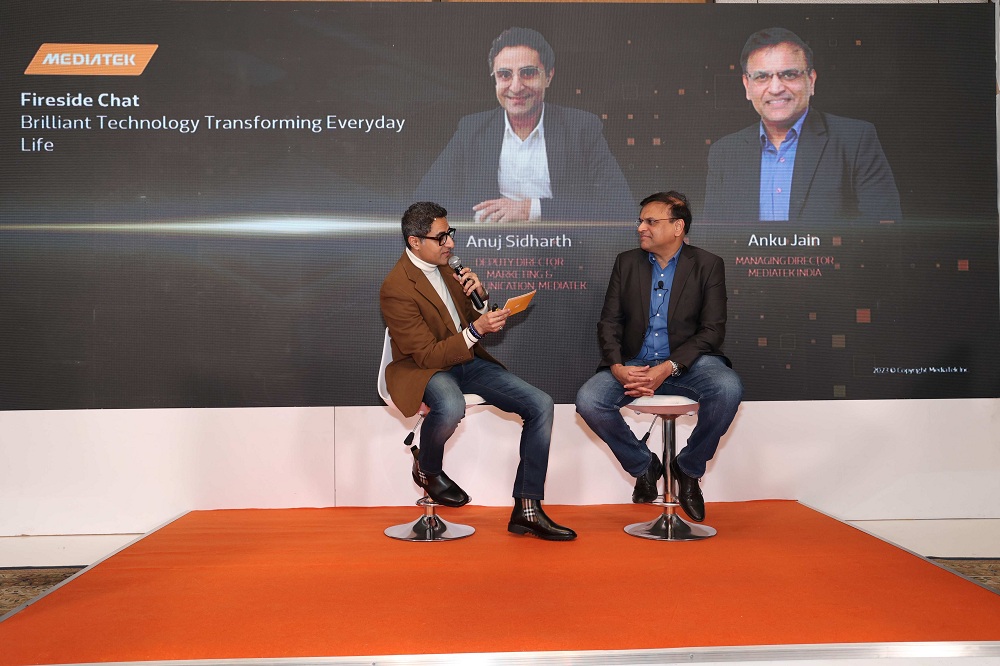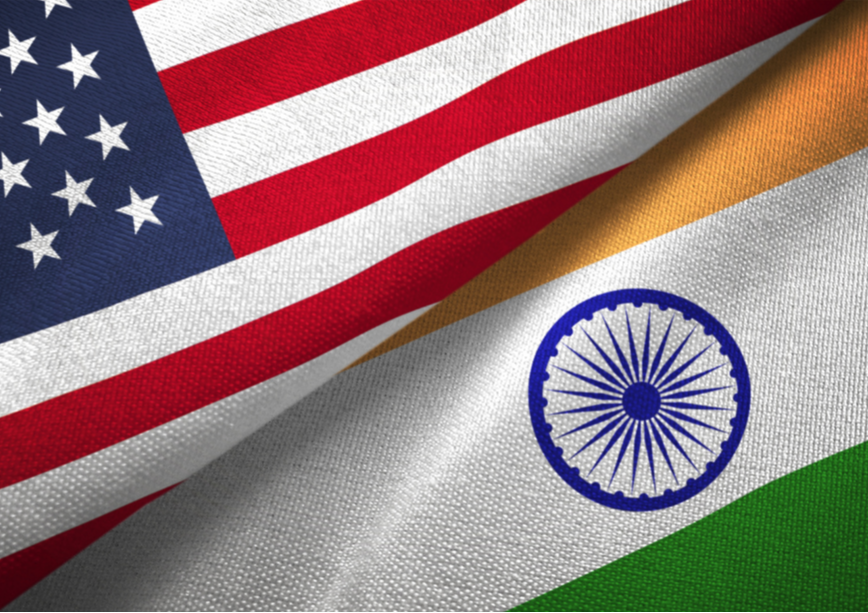Social commerce driven by WhatsApp, iMessage to grow: Express Analytics

NEW DELHI: The US-based data analytics provider Express Analytics that competes with the likes of Adobe and Salesforce, believes that social commerce would become a significant part of e-commerce where users transact via WhatsApp, iMessage and other messaging platforms, and said that 80% of the interactions for support functions would shift to artificial intelligence (AI) by 2025. In the Asia region, India and China have emerged as the two growth markets for customer data platform (CDP) following increased digitization and high internet penetration. In an interaction with The PageOneAsia, Hemant Warudkar, founder & CEO, Express Analytics talks on business intelligence, and role of understanding individual behaviour and personalization. Edited excerpts:
What are your key offerings as a part of your product portfolio?
Express Analytics offers products as well as data analytics services. Leading our product portfolio is the customer data platform (CDP) which is not only a plug and play one but also modular in structure which means it gives clients the flexibility of using it in either one or all of the business departments – from sales, marketing to supply chain and human resources. For example, it helps marketing to look for prospects, or even retarget its existing customer base, thus improving the effectiveness of the advertising and marketing spend. Unlike our competitors, our CDP’s USP is this flexibility, plus our machine learning algorithms and team of data engineers/data scientists who manage the data analytics. Express Analytics also offers a bouquet of analytics services that include business intelligence analytics, marketing analytics and customer analytics. Under these, what we have up on offer is a range of services, beginning from the initial ingestion of company data to its analysis and use in advertising, marketing and sales.
What is CDP and how is it beneficial for customers and which sector/s it suits most?
To put it succinctly, a customer data platform is a “data unifying software”. It can be added to a business’ MarTech stack. By doing so, a CDP helps manage a brand’s customer experience across every touchpoint, something that is not possible without a CDP. The CDP’s journey starts by absorbing an enterprise’s data from all sources and making it available 24X7 to all of the enterprise’s users. To cut a long story short, a CDP is an “enabler” that helps brands make intelligent decisions around the right audience, giving them the right content over the right channel at the right time. This may be an oft-used phrase but it’s true. A CDP helps any enterprise become “intelligent” and “smart” about its clients.
Using a CDP has dual benefits: the enterprise saves on not only time but money, and it also increases its revenue with this kind of scientific targeting of leads, prospects and customers. By creating an identity profile for each customer, a business can better understand the context and intent of customer interactions. It is also able to better predict sales figures by segmenting your customers by common profile qualities, offer near-real-time promotional offerings, and have a better handle on customer satisfaction and how to drive repeat purchasing. That was looking at a CDP’s value from a business’ viewpoint. But for customers, a CDP works wonders, for it helps streamline their entire encounter with a brand into one seamless experience.
There’s no disruption in their buying journey anymore. That’s because we have an identity that links a person’s persona across all devices and channels. Customers get the same quality of customer experience at all points of interaction with a brand: be it over a desktop, or a mobile device, or on any of the social media channels. This is also called identity resolution. At all times throughout a customer’s journey, a brand is fully aware of who that person is, their previous buying history, likes and dislikes, thanks to identity resolution. By individualization of each interaction, you have a highly satisfied customer at the end of his journey, while the company reaps the highest rewards for its efforts. After all, who doesn’t want a personalized treatment, right?
So far as your query on which sectors can use a CDP, it is most beneficial to companies engaged in direct-to-consumer activities in retail, both offline and online, including e-commerce companies, insurance, banking, hospitality, telecom, government, municipalities, to name a few. You will be surprised to know that contrary to popular belief that a CDP is only meant for B2C companies, it can be of immense help even for those in the B2B sphere. As more and more data gets generated with the digitization of all facets of human interactions, understanding individual behavior and personalization of these interactions or shall we call it humanizing these interactions will become the strategic advantage of organizations.
Who are your key competitors? What is the analytics solutions market size in India, and what growth do you expect in the next two years?
Today, the CDP space has many players unlike say about 5 years ago. But there isn’t any dominant player yet. Express Analytics got into the CDP business in the first wave itself, when there were companies selling customer relationship management (CRM) software but not many had yet heard of a CDP. Our key competitors are all CDP vendors and marketing services providers such as Adobe, Salesforce, Segment and Lemnisk, etc.
The size of the analytics solutions market in India is still to be mapped out due to the lack of organized approach to the data management within Indian corporates so far. But things are fast changing. Various research agencies have forecast the CDP market globally to grow to US $ 4,117.87 million by 2025 and US $5,503.4 million by 2028. Which means a Compound Annual Growth Rate (CAGR) of about 24%. While North America no doubt is the largest market yet, leading this growth is the Asia Pacific region, namely India and China due to increasing digitization and high internet penetration. India offers the most opportunity but also presents the biggest challenge as marketing departments here are still slightly muddled over what exactly a CDP is and what it can really do. In addition to educating this market on the full range of a CDP’s functionalities, what also poses a problem is that the profile of customers can be very shallow due to missing data or lack of customer data. All of which makes it a challenge to assess the growth prospects in the next two years. But going by present market conditions coupled with the demand for personalization, and also the fact that the COVID-19 pandemic has hastened the digitization of most businesses, we expect it to overshoot the projected global growth rate at about 30%.
How many customers do you have worldwide and in India?
So far, we have had about 50 customers worldwide, and some of them are Fortune 500 companies like Sony, Walmart, and also Solar Turbines, Lamps Plus and CPO Commerce. In India, it’s been only about 2 months since Express Analytics launched a concerted market entry campaign, and in that short time it has already added travel industry behemoth Bel Air to its clients’ list.
With large enterprises relying more on data, what role do you play in data visualization and business intelligence?
Data visualization and business Intelligence are a small part of our business, we help in assembling and harmonizing the data. Our role is to ensure that the customer’s understanding of the data is enhanced and patterns in the data are made obvious. Business intelligence typically stops at reporting historical data or at best showing the current trends. Our focus is mainly bringing forecasting and predictive intelligence. A business needs to be able to predict and assess its competitive landscape and make appropriate choices to succeed in the marketplace.
On the analytics solution part, offered by companies like you, what is the quantum of savings that a traditional organization can achieve in its marketing campaigns both in terms of time and dollars?
Our solution can increase the effectiveness of the marketing campaigns by reducing the cost of advertising (ad cost less than 4%) and a return on investment within 12 months. As an example, one of our customers saved US $2 million on their annual advertising budget by using one of our solutions, which shows the kind of RoI one can expect by deploying our suite of services.
As we are seeing customer operations, particularly the support functions moving to AI/chatbots including voice-enabled roles, what role you can play in such scenarios, and how strongly this customer care shift you anticipate by 2025?
As we have seen, the first line of customer service and interaction today is largely robocalls and chatbots. But enterprises also need to track chatbot KPIs to enhance its performance as well as monitor customer requirements. We offer chatbot analytics for that. What’s more, in the transition of support to AI/chatbots, our solution can provide the context of each customer interaction so that relevant data can be provided to the customer to close the query in the first session increasing the customer satisfaction or CSAT. We can chart entry and exit points via dashboards as part of customer insights generation. We anticipate that by 2025 almost 80% of the interactions for support functions will move to AI/chatbots.
What are the trends you are seeing in analytics globally and in India? Which are the top 2-3 sectors adopting it for smart business decisions?
Globally, the Finance sector has been the leader in adopting data analytics, followed by e-commerce and the telecom sector. By 2025, more than 25-30% of commerce will become “Conversational Commerce”, where multilingual interactions will lead to the explosion of interstate commerce in India. The term “invoice” would literally mean a voice-based invoice. Social commerce will also become a major part of e-commerce where WhatsApp, iMessage and other messaging activities will be the source of transactions. Blockchain and crypto-currency is another space that will boost the analytics industry in a big way. By using blockchain-based smart contracts in place of centralized institutions like banks and brokerages, decentralized finance (DeFi) is all set to disrupt traditional financial institutions. But the overall trend will be data driven customer experience. It is about collecting, measuring, analyzing and then transforming the insights to provide a seamless and better customer experience to improve brand positioning. The same in other countries, the same in India.
The Indian government, as a part of digital ambition, is also moving in this direction to accelerate AI/data-backed decision making. What role do you intend to play in the public sector, and are you in talks with any state/regional government or public sector organization?
We are currently in talks with several state and regional government bodies, as well as public sector units to help them introduce AI/ML data analytics solutions to the masses. We see our role here as a catalyst in the relationship between governments and citizens – to help the governments accelerate their digital transformation. What Express Analytics brings to the table is the necessary technology and data analytics tools to help accelerate the transformation.
Our services such as data cleansing, data warehousing, marketing analytics, customer/citizens’ sentiment analytics, search and recommendation engines, and data visualization, together with our robust, state-of-the-art customer data platform can be easily integrated into departments like Finance, Urban Infrastructure Development, Education, Law and Order, Environment, Civic Services, to name a few. Once integrated, all the public sector services, using the power of data analytics, cloud computing and AI can resolve problems at scale, innovate in a fast and agile manner, and eventually transform public services for the citizens. Our ‘government to citizen’ solutions will allow one on one interaction between officials and citizens. It will help understand the pulse of the citizen at the pin code level. Just imagine the ability to gather insights during an emergency and ability to direct public response in near real-time, something that is lacking today but can easily be implemented as part of the digital transformation solution. We are also working to help export India’s unique Aadhaar card type of services to other African nations with the help of various public sector companies.











